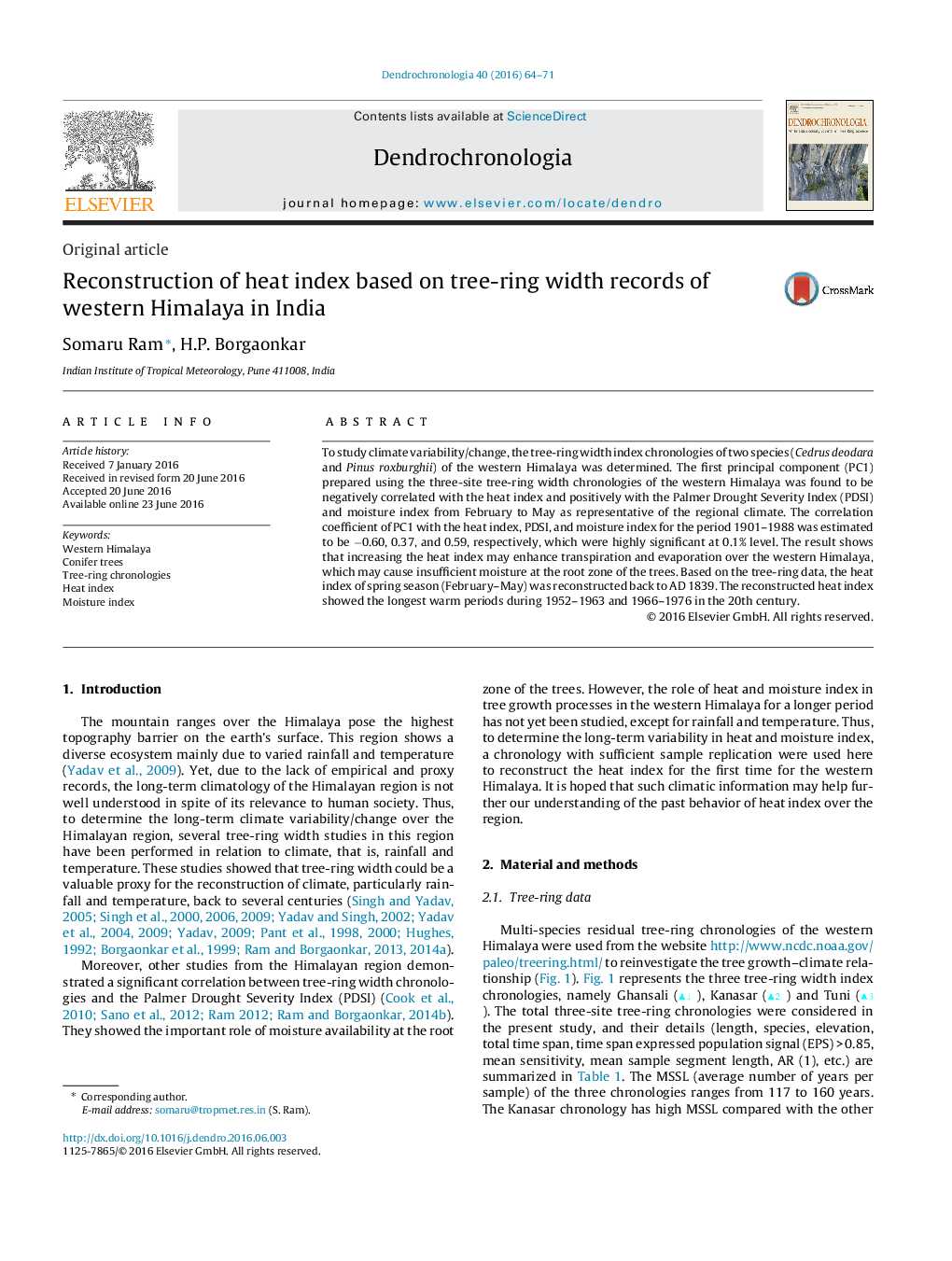| Article ID | Journal | Published Year | Pages | File Type |
|---|---|---|---|---|
| 85539 | Dendrochronologia | 2016 | 8 Pages |
To study climate variability/change, the tree-ring width index chronologies of two species (Cedrus deodara and Pinus roxburghii) of the western Himalaya was determined. The first principal component (PC1) prepared using the three-site tree-ring width chronologies of the western Himalaya was found to be negatively correlated with the heat index and positively with the Palmer Drought Severity Index (PDSI) and moisture index from February to May as representative of the regional climate. The correlation coefficient of PC1 with the heat index, PDSI, and moisture index for the period 1901–1988 was estimated to be −0.60, 0.37, and 0.59, respectively, which were highly significant at 0.1% level. The result shows that increasing the heat index may enhance transpiration and evaporation over the western Himalaya, which may cause insufficient moisture at the root zone of the trees. Based on the tree-ring data, the heat index of spring season (February–May) was reconstructed back to AD 1839. The reconstructed heat index showed the longest warm periods during 1952–1963 and 1966–1976 in the 20th century.
